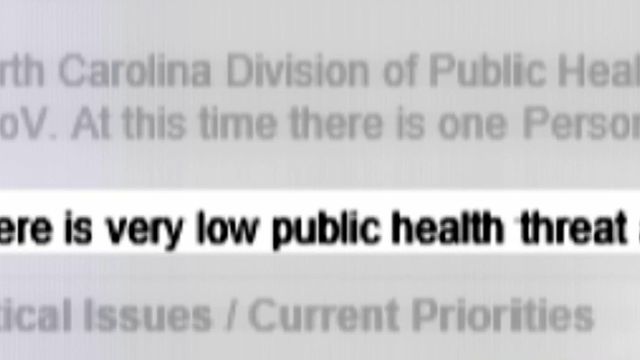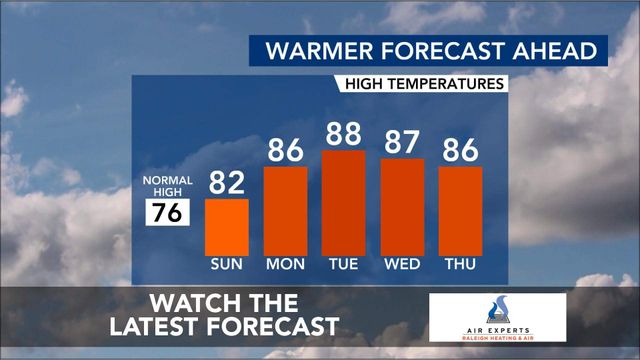Emails show false alarms, concerns as NC emergency managers prepped for pandemic
Emails provided to WRAL Investigates from the state Department of Public Safety provide a peek behind the curtain as the state ramped up for the arrival of the new coronavirus. The correspondence shows the work behind the scenes and multiple false alarms leading up to the state's first case in early March.
On Jan. 21, the state Department of Health and Human Services sent a memo to all health care providers in North Carolina outlining what was known about coronavirus at the time and gave guidance on how to handle potential cases. As proof of how much was unknown then, the memo suggested minimal human-to-human spread.
Two days later, emails tracked the state's first suspected case involving a Duke University student who flew in from China. That person eventually tested negative for coronavirus.
The following day, Jan. 24, a state summary sent to emergency and health officials categorized the virus as a low public health threat for North Carolina.
Well before North Carolina's first confirmed case in early March, state leaders were aware of testing issues. A Jan. 28 email provided an early warning sign, stating that the state public health lab still needed three to four weeks to be ready for the virus.
On the last day of January, an email shows state officials were monitoring two more people who were on a flight with a patient from Washington state.
That same day, DPS Communications Director Pamela Walker wrote that health officials believed people should still be more worried about the flu than coronavirus. That sentiment was echoed by the state epidemiologist 10 days earlier.
"If you don't have a history of having been in Wuhan, China, in the past two weeks, then flu is what you should be concerned about. Not this new coronavirus that's out there," Dr. Zach Moore said during a Jan. 21 interview.
With cases picking up in Washington state, a Feb. 4 email includes a list of possible quarantine camps across the state, including Butner and a closed hospital in Richmond County.
On Feb. 5, another patient was under investigation in Wake County. The person, who had traveled to China, was admitted to WakeMed as a precaution but later tested negative.
Five days later, Moore told those in the loop that Gov. Roy Cooper was convening a coronavirus task force. In discussing the group's first meeting, State Health Director Dr. Betsy Tilson again said the flu was the real threat at the time.
"The best thing you can do to prevent coronavirus, as well as the flu, which is a bigger risk to North Carolinians today, is that old-fashioned wash your hands for 20 seconds," Tilson said.
By Feb. 25, a state report showed a total of nine people had been tested across the state. All were negative. A chain of emails showed state leaders discussing whether to make public announcements when people were placed under investigation for possible exposure. State Division of Emergency Management Director Mike Sprayberry even contacted multiple other states to see how they handled that information. In the end, every suspected case was not made public in North Carolina.
Early on in the outbreak, state officials bemoaned a shortage of personal protective equipment, such as masks, gloves and gowns, for health care workers and others. But health and emergency officials were concerned much earlier.
"I believe what we are seeing here though is a potential gap in the preparedness across the state and something that I feel we need to better understand to be able to fully address," Kimberly Clement, program manager for the state's Healthcare Preparedness Program, wrote in a Feb. 28 email exchange.
On March 2, the dialog shifted. In an emergency management presentation, it was predicted North Carolina would see its first case within a week and community spread a few weeks later. The very next day, an email went out announcing the state's first case – a Wake County man who had visited a nursing home near Seattle, where one of the first viral outbreaks in the U.S. occurred.
As North Carolina prepared for the virus, the emails also showed state emergency leaders were keeping close tabs on Washington's state health department by routinely sending out status updates on how that state was handling its cluster of cases.











